Archaeology never ceases to fascinate, particularly when it brings new insights into human history that challenge our understanding of prehistory. One of the most groundbreaking discoveries in recent times has been the unearthing of the skeleton of a child, affectionately nicknamed “Pangpond,” in the remote Din Cave in Thailand. This remarkable find, dating back over 29,000 years, is not only the oldest human skeleton ever discovered in Thailand, but it also provides valuable clues about the lives of prehistoric peoples in Southeast Asia. This discovery, announced by the Thai government’s Fine Arts Department, is reshaping our understanding of early human existence and the region’s complex history.
The Burial Site and Context
The Tham Din (Earthen Cave) archaeological site, located in Khao Sam Roi Yot National Park, has long been of interest to archaeologists due to its rich trove of prehistoric artifacts. The cave, which was first explored for rock art in the 1990s, holds significant cultural value. Recent excavations, however, have revealed that the cave was not only a canvas for ancient artists but also a place of burial and ritual practices.
The cave’s location—125 meters above sea level—makes it an unusual site, as it offers a rare glimpse into the lifestyle and beliefs of Southeast Asia’s early human inhabitants. Previous excavations had already uncovered pottery sherds, stone tools, and animal remains in the upper layers of the cave. However, it wasn’t until 2022 that a particularly significant discovery was made—Pangpond’s skeleton, buried deep beneath these materials, offering evidence of a human presence in the region during the late Pleistocene.
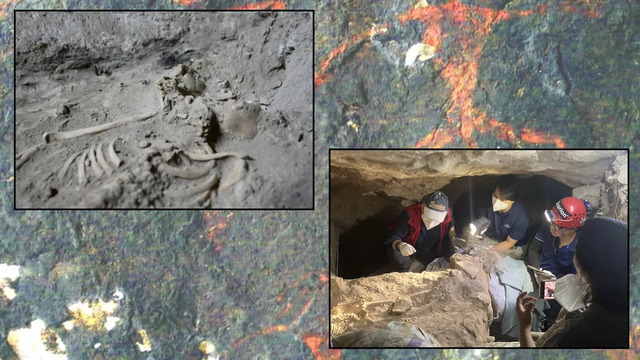
Video
Watch the video about the discovery of 29,000-year-old remains of a child in a Thailand cave, featuring ‘symbols of blood and power.’
Pangpond: The Child Who Lived 29,000 Years Ago
The skeletal remains of Pangpond belong to a child, likely between six and eight years old at the time of death. The child’s remains were found in a supine position, with arms and legs folded closely to the body. Archaeologists noted the deliberate nature of the burial, suggesting it was carefully planned and executed. The positioning of the body, along with the presence of surrounding stones, indicates that the child was possibly wrapped or tied before being laid to rest.
The age of the skeleton alone makes it a valuable find, but it is the burial method and the surrounding context that add layers of intrigue to the discovery. The remains were found beneath layers of charcoal, ash, and other organic material, suggesting that after the body was placed in the grave, a fire was lit around it. This may have been part of a ritualistic process to drive away wild animals and prevent the unpleasant smell of decomposition, an insight into the cultural practices of prehistoric people.
Insights from the Artifacts and Cave Paintings
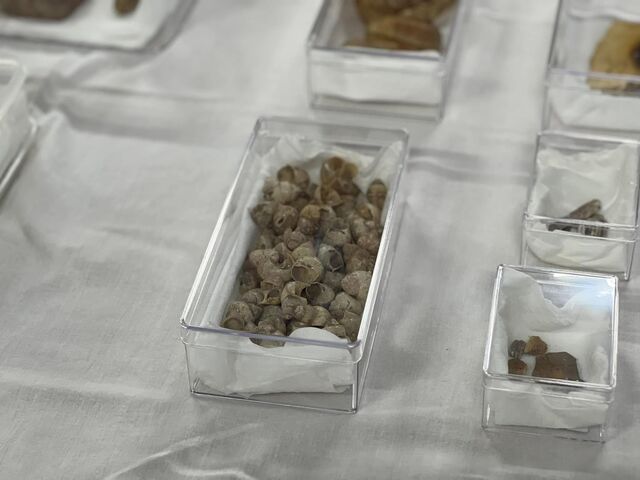
The cave’s walls and ceilings, adorned with red ocher paintings, provide further clues to the symbolic and ritualistic importance of the site. Many of the paintings depict human figures, animals, and abstract symbols. Some of the human figures are shown with bows and arrows, suggesting a culture centered around hunting. The red ocher used in the paintings might be symbolic of blood, power, or vitality—an interpretation offered by lead archaeologist Kannika Premjai. The connection between the burial and the paintings raises the possibility that Pangpond’s death was intertwined with these symbolic rituals.
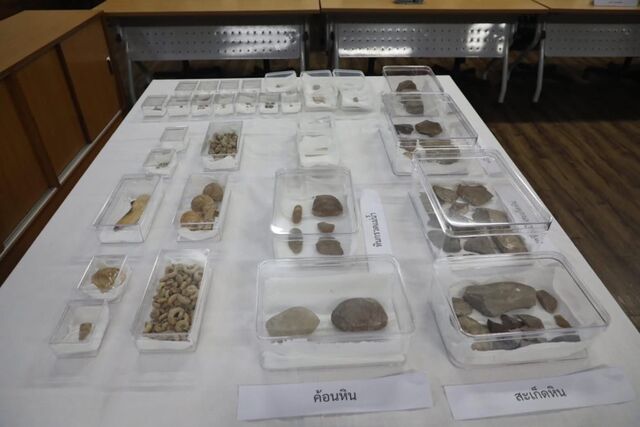
The artifacts surrounding the burial, such as tools and pottery, further suggest that Tham Din Cave was more than just a place of death—it was a cultural hub where people gathered, performed rituals, and celebrated the cycles of life and death. The cave’s art and its function as a burial site point to a deep understanding of the human experience and the connection between life, death, and the forces of nature.
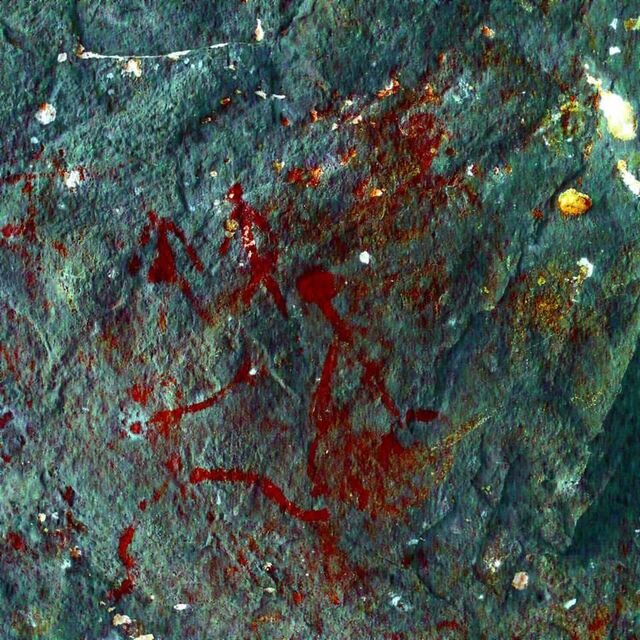
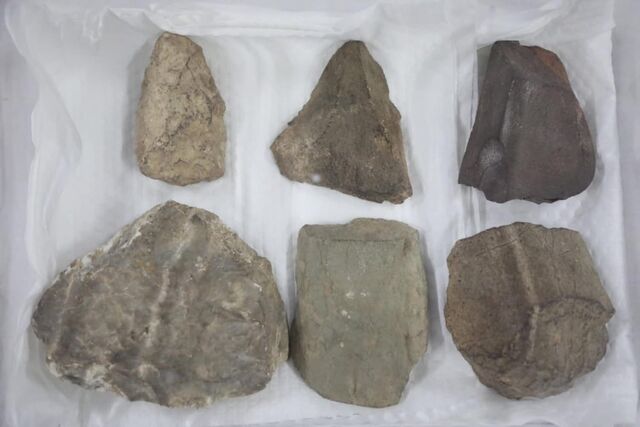
Radiocarbon Dating and the Chronology of the Burial
To determine the exact age of the child’s remains, archaeologists employed radiocarbon dating techniques on charcoal and shell samples from layers above the burial site. The results of the radiocarbon analysis confirmed that the child’s remains were older than 29,000 years, placing them firmly in the late Pleistocene epoch.
This discovery is crucial for understanding the timeline of human occupation in Southeast Asia, as it provides evidence of human life in the region well before previously known human remains. The dating places Pangpond in a time when the world was undergoing significant climatic changes, with sea levels much lower than today. This period also saw the formation of Sundaland, a landmass that once connected Southeast Asia, making migration between islands and the mainland easier. The evidence from Tham Din Cave suggests that humans in the region were adapting to these changes long before the Holocene, the current geological epoch.
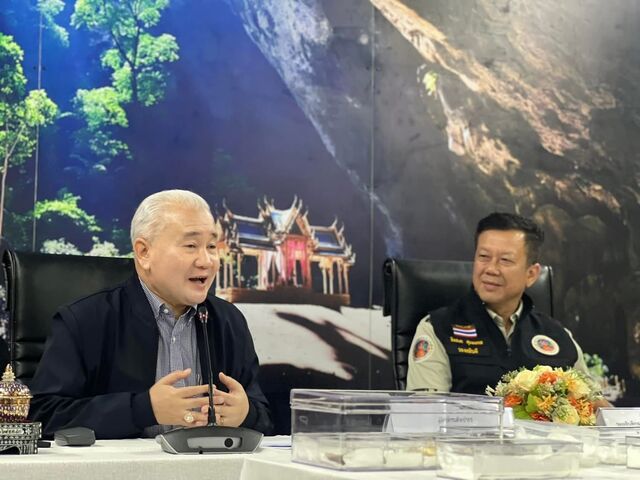
Impact on Our Understanding of Early Human Life
Pangpond’s discovery offers a rare glimpse into the lives of prehistoric humans in Southeast Asia. The burial method, along with the artifacts found at the site, speaks to a society that engaged in complex rituals and had a deep understanding of their environment. The fact that the child was buried with such care, surrounded by stones and fire, suggests that death was a significant event in their community, one that was marked by ritual and ceremony.
The site also sheds light on the early human adaptation to the environment. During the late Pleistocene, much of Southeast Asia was connected by land, allowing people to travel across what is now submerged terrain. The evidence suggests that Tham Din Cave was a site of prolonged human occupation, offering insights into the daily lives of hunter-gatherers and their strategies for survival in a changing world.
The Importance of Continued Excavation and Preservation
The discovery of Pangpond is just the beginning of what could be a series of revelations about early human life in Southeast Asia. As further excavation work continues at Tham Din Cave, archaeologists hope to uncover more evidence that will provide a clearer picture of the prehistoric people who once inhabited the region. The cave’s combination of rock art, burial sites, and artifacts makes it a key location for understanding the cultural and social dynamics of early human societies.
The Thai Department of National Parks, Wildlife, and Plant Conservation has committed to protecting the site, ensuring that future generations will be able to learn from these discoveries. Plans to open the site to tourism and educational purposes will help further the public’s understanding of Southeast Asia’s rich archaeological heritage.
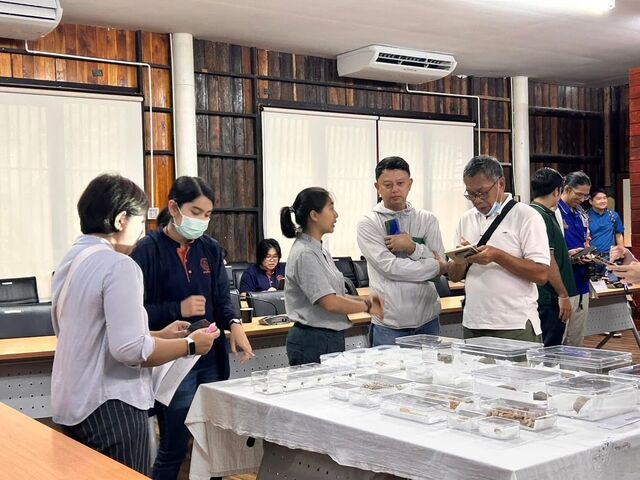
Video
Watch the video about Thai archaeologists unearthing a perfectly preserved 5,000-year-old whale skeleton.
Conclusion: A New Chapter in Southeast Asian Prehistory
Pangpond’s discovery is a remarkable achievement in the field of archaeology, not only because of its age but also due to the wealth of information it provides about early human life in Southeast Asia. It offers a new chapter in the history of human adaptation, migration, and cultural practices in the region. As further research is conducted, we can expect to gain even more insight into the lives of these ancient people and the lasting impact they had on the development of the region.
The excavation of Tham Din Cave serves as a reminder of the complexity and richness of Southeast Asia’s prehistory, challenging our understanding of human history and offering valuable clues to the lives of those who came before us. As new discoveries continue to emerge, the story of Pangpond and the people of the late Pleistocene will undoubtedly shape our understanding of the distant past for years to come.



